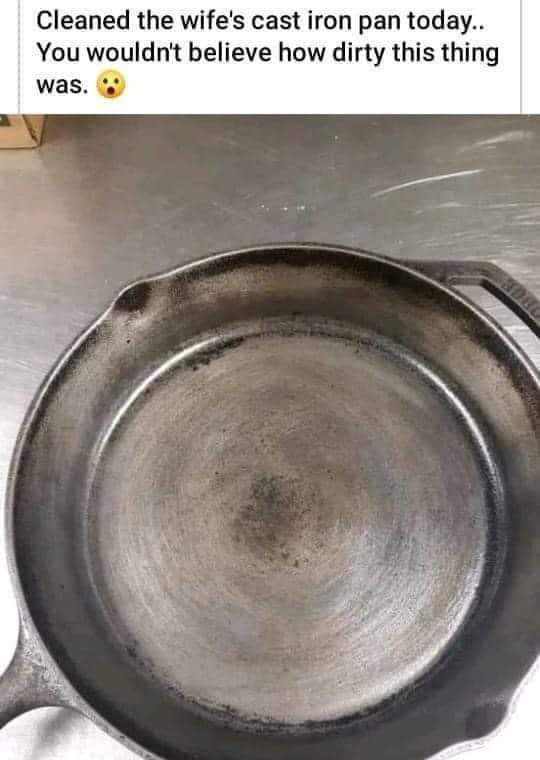this post was submitted on 13 Apr 2024
706 points (98.0% liked)
Memes
45740 readers
454 users here now
Rules:
- Be civil and nice.
- Try not to excessively repost, as a rule of thumb, wait at least 2 months to do it if you have to.
founded 5 years ago
MODERATORS
you are viewing a single comment's thread
view the rest of the comments
view the rest of the comments

There's a lot of answers here, but I don't think anyone said the magic words. To reseason cast iron, you need an oil high in poly-unsaturated fatty acids. Those are the kind that can chain together, and form a good polymer coating.
The thing that trips me up most about this subject is that 140 years ago, pork fat was very good for seasoning cast iron. Today, it isn't, because the composition of the fat has changed significantly.
The best seasoning coats will be thin, not appear or feel oily, give the pan a dark color slightly more glossy than an eggshell, and resist mild detergents, metal spatulas, and heat high enough to sear a steak on. If you have a layer of loose stuff in the pan, that's just a layer of gunk, and is probably adding some weird flavors to anything you cook.
In other words: Linseed.
Though I wouldn't go so far as to say "need". Linseed works much better, builds a nicer patina very quickly, but pretty much any fat works. In practice mine is getting seasoned with olive oil because that's what I have standing around in the kitchen.
Proper technique is much more important in practice: First and foremost heat empty, then add oil and fry, then clean, ideally without degreasing (boiling water and a spatula do wonders), then (if necessary) add a drop of oil and try to rub it off with kitchen tissue, then put back on the stove to dry and maybe polymerise a little. Always have that thin layer of oil otherwise the pan is going to rust.
You can have a perfect patina, if you don't heat up the pan before putting stuff in there things are still going to stick. You can have practically no patina, if you bring up just a single thin layer of any fat up to its smoke point and after that add oil (so the thing isn't completely dry) things aren't going to stick.
Linseed has an awfully low smoke point though, wouldn't seasoning built with it burn off when trying to cook at higher temperatures?
A good patina will contain a good chunk of burnt oil, it's not that the stuff vanishes when smoke gets produced linseed oil in fact produces very little smoke compared to say canola. Never getting to the smoke point of whatever you have on there will result in a non-black and not entirely unlikely also gooey patina.
It's not a good idea to go miles beyond the smoke point but hovering around it is pretty much optimal. You use oils with higher smoke points if you want a more aggressive sear without ruining the taste of whatever it is you're searing, the thin layer you smoke off when heating the pan, or that smokes off while the pan is cooling off quickly after adding oil+ingredients, is generally so miniscule that it doesn't really affect taste short of giving some wok hei which is generally a good thing. If the smoke alarm goes off or you need to open a window you're overdoing it.